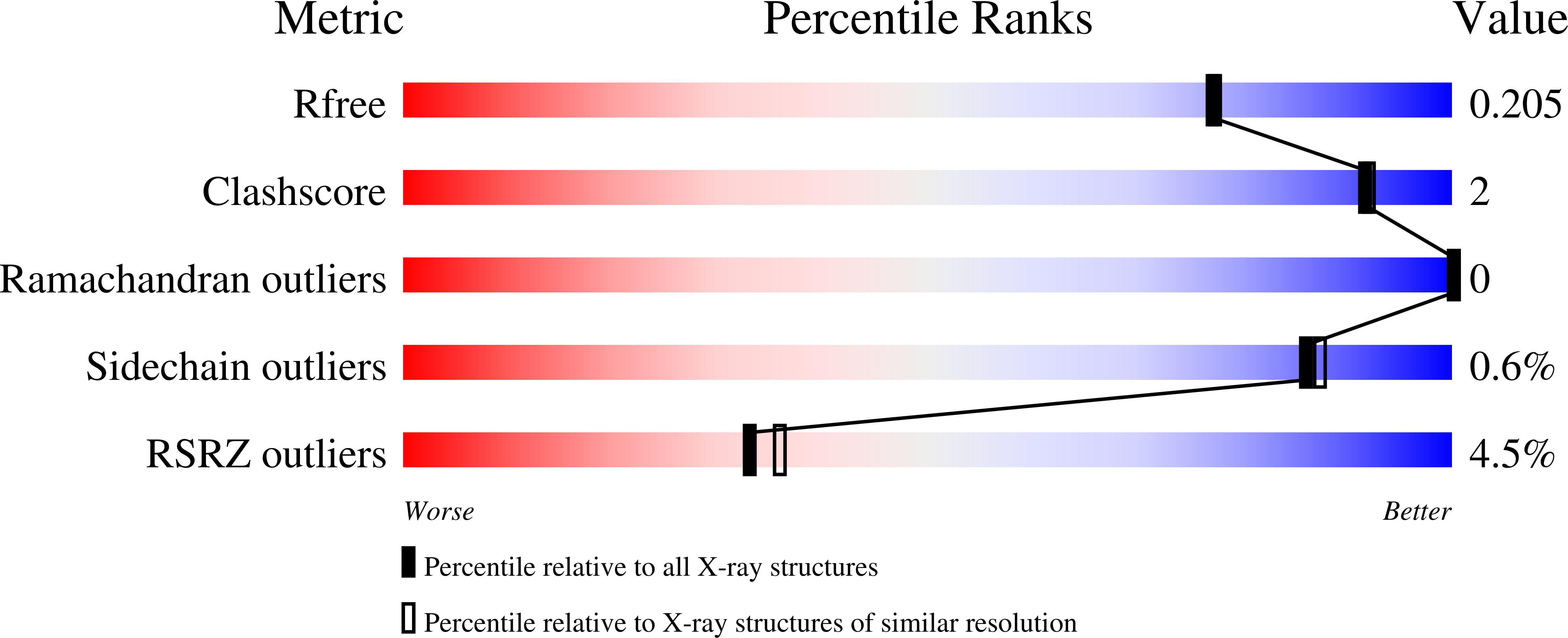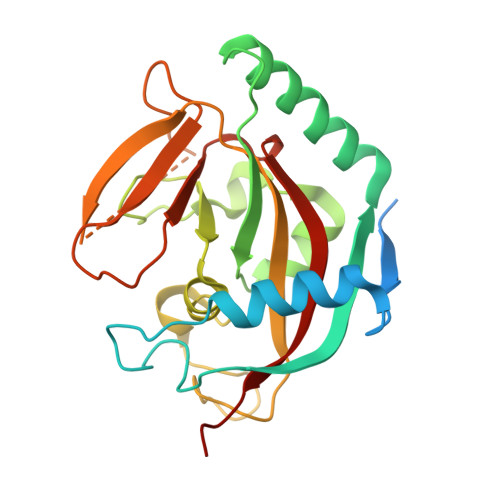Discovery of Potent and Selective Nonplanar Tankyrase Inhibiting Nicotinamide Mimics.
Nkizinkiko, Y., Suneel Kumar, B.V.S., Jeankumar, V.U., Haikarainen, T., Koivunen, J., Madhuri, C., Yogeeswari, P., Venkannagari, H., Obaji, E., Pihlajaniemi, T., Sriram, D., Lehtio, L.(2015) Bioorg Med Chem 23: 4139
- PubMed: 26183543
- DOI: https://doi.org/10.1016/j.bmc.2015.06.063
- Primary Citation of Related Structures:
5AKU, 5AKW, 5AL1, 5AL2, 5AL3, 5AL4, 5AL5 - PubMed Abstract:
Diphtheria toxin-like ADP-ribosyltransferases catalyse a posttranslational modification, ADP-ribosylation and form a protein family of 17 members in humans. Two of the family members, tankyrases 1 and 2, are involved in several cellular processes including mitosis and Wnt/¦Â-catenin signalling pathway. They are often over-expressed in cancer cells and have been linked with the survival of cancer cells making them potential therapeutic targets. In this study, we identified nine tankyrase inhibitors through virtual and in vitro screening. Crystal structures of tankyrase 2 with the compounds showed that they bind to the nicotinamide binding site of the catalytic domain. Based on the co-crystal structures we designed and synthesized a series of tetrahydroquinazolin-4-one and pyridopyrimidin-4-one analogs and were subsequently able to improve the potency of a hit compound almost 100-fold (from 11 ¦̀M to 150 nM). The most potent compounds were selective towards tankyrases over a panel of other human ARTD enzymes. They also inhibited Wnt/¦Â-catenin pathway in a cell-based reporter assay demonstrating the potential usefulness of the identified new scaffolds for further development.
Organizational Affiliation:
Faculty of Biochemistry and Molecular Medicine & Biocenter Oulu, University of Oulu, PO Box 5400, FIN-90014 Oulu, Finland.


















